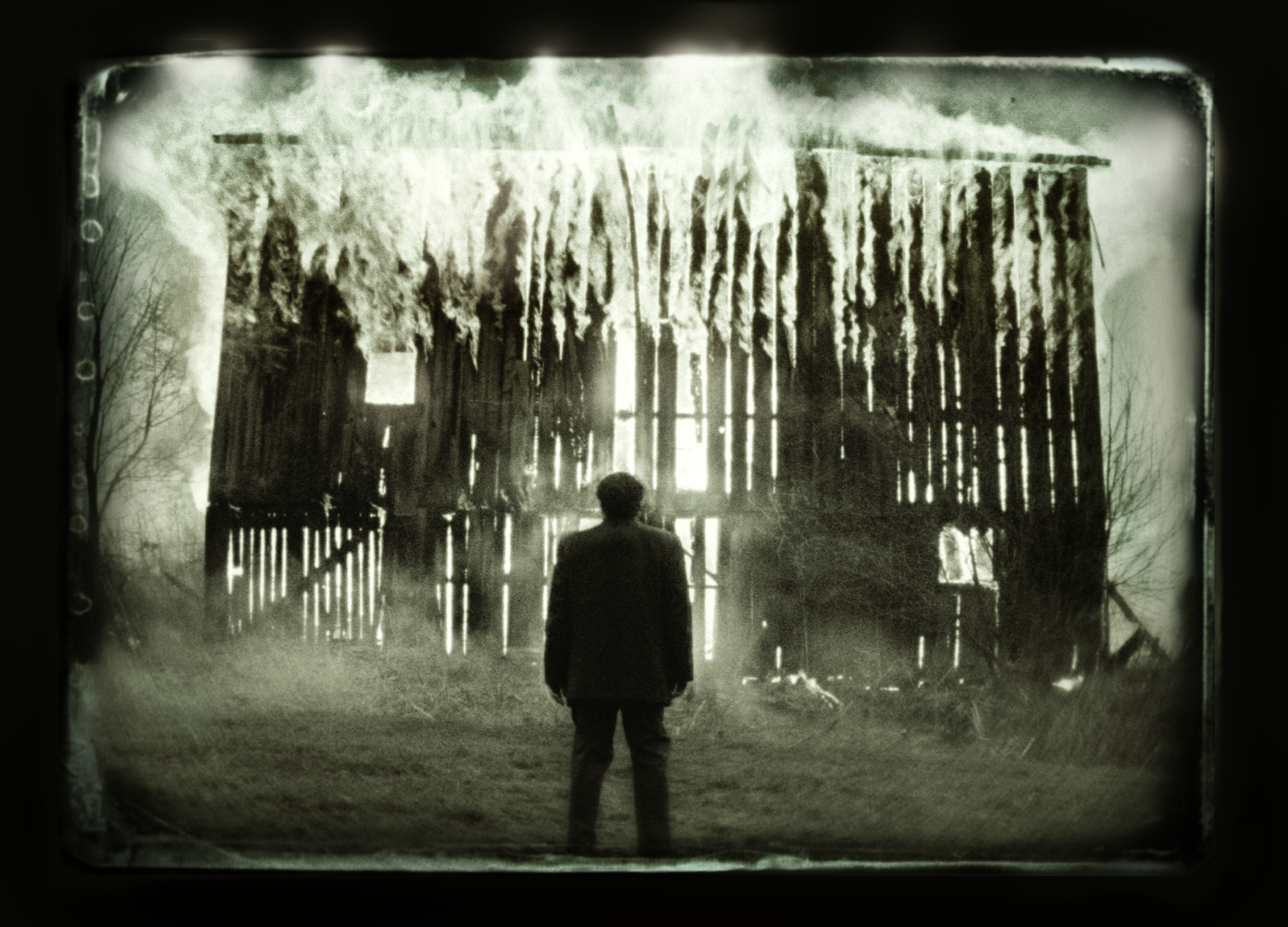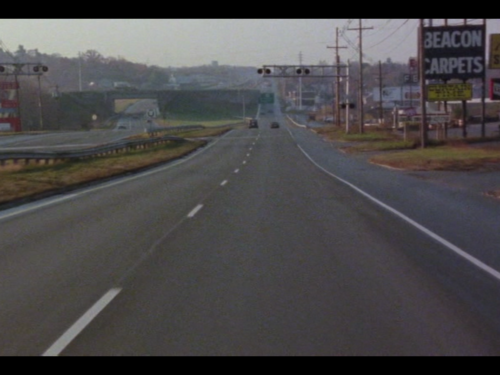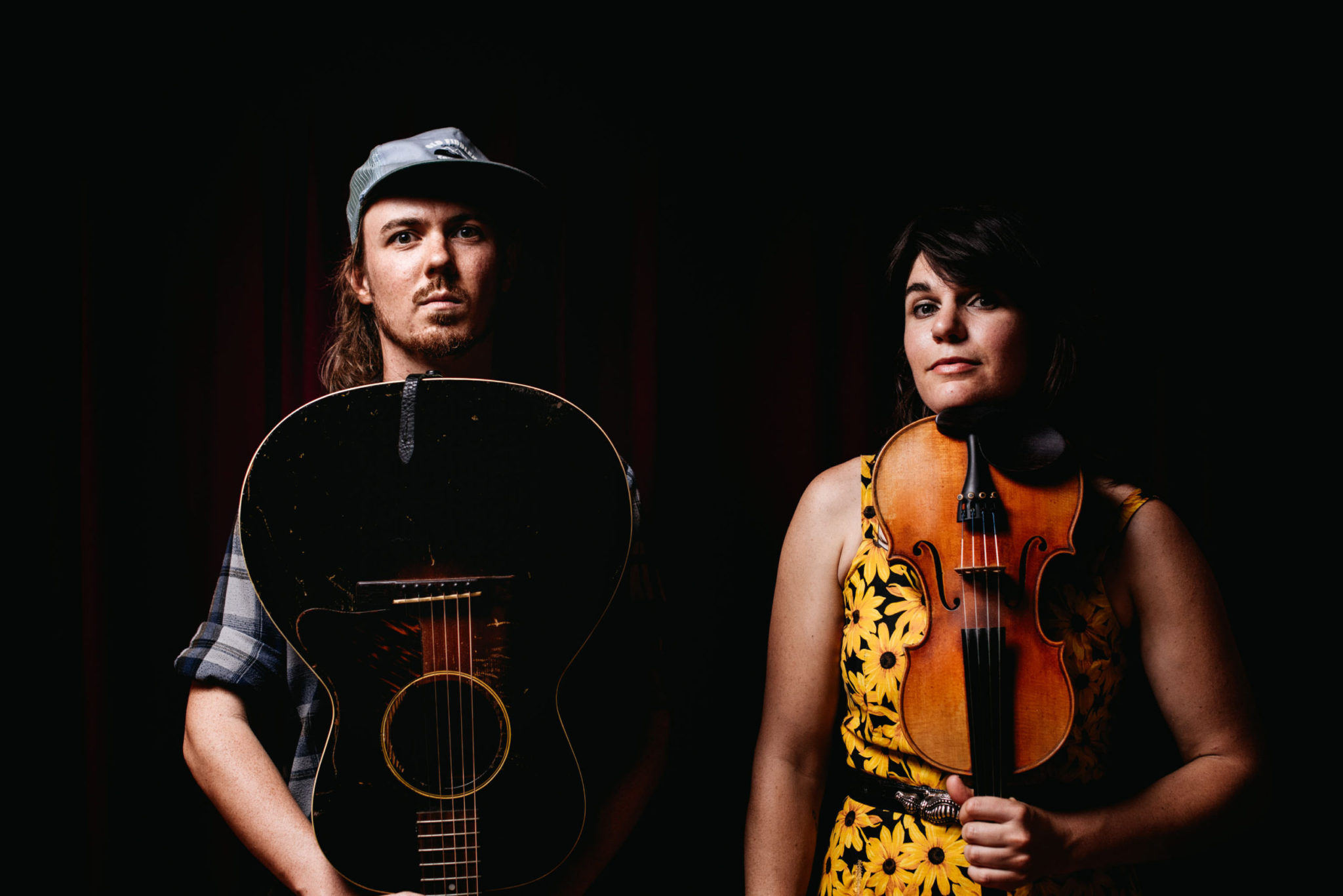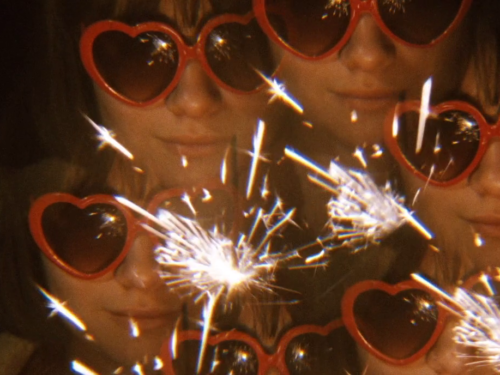To accompany our latest Best of the 2010s film essay on Free in Deed (2015), we are proud to present a career-spanning interview with writer-director Jake Mahaffy
Jake Mahaffy has long been one of the most fascinating figures of American Independent film. He has done it all — from one-man-band micro-budget dramas, to a series of darkly comic Motion Study short films, to a studio-produced fantasy-horror feature — and plans to do much, much more in the future.
With a background in fine arts, Mahaffy’s approach to cinema is far from the norms of traditional filmmaking. His earliest films, made in the heyday of digital video, were stark, black-and-white productions, shot on film out in the elements in rural Pennsylvania. His breakthrough feature, Wellness (2008), was a Grand Jury Prize winner at South By Southwest and has since been praised by Andrew Bujalski as “one of the best micro-budget indies of the digital-video era.” In recent years, he has moved to more ambitious productions, including 2015’s Free in Deed and the New Zealand-shot Reunion (2021).
Over the years I’ve written on a few of Mahaffy’s films for Split Tooth, and it was a pleasure to discuss his incredible body of work, how he undertook some of his most arduous productions, and what he has learned from making independent art films for two decades.
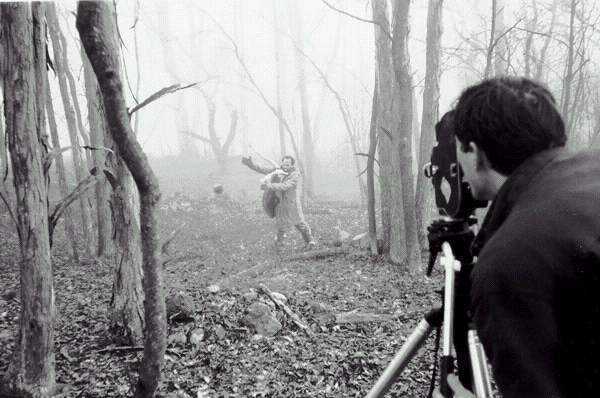
Split Tooth Media: So many filmmakers start simple and work with what they have, often shooting quick and taking what they can get. But War (2004), your first feature, was produced over a period of nearly five years. It takes place in what you describe as ‘the world after the end of the world.’ You used a hand-cranked film camera and made the movie ‘without a producer, crew, or budget’ in rural Pennsylvania. What led you to these low scale, but highly ambitious, production methods so early on?
Jake Mahaffy: I came to filmmaking through fine arts, visual art, and observational drawing. I was fortunate with the professors I had at Rhode Island School of Design because they were discipline-oriented and very specific in their training. The discipline wasn’t about feelings, pure abstraction or vague conceptual art. So, I developed some real skills. I’ve always been visually oriented, so for me, setting an entire movie in a bedroom or someone’s boring apartment was not going to work. The first thing, the most important thing, has always been the visual narrative, not theatrical, dramatic, literary, or performative cinema.
In order to make a film, in my mind, the baseline requires narrative imagery and world-building: compositions, atmosphere, juxtapositions, variation in perspectives. This focus is different than demonstrating story from behaviors or characters’ emotions. With War especially, it was more Bressonian in its performative style so there was no theatrical performance at all in that film. I didn’t have any theories about it, that’s just how it had to be.
As for doing it all on my own, it was a necessity. I didn’t feel confident enough to convince anyone to give me money. My thesis film at RISD, Egypt Hollow (1996), was an epic 25-minute chaos trip that I made with a hand-cranked Bolex. All of the other students wanted the new cameras and to edit in AVID. I realized if I used a little Bolex, I could check it out from gear rental and have it to myself the entire year. I figured I’d rather have that freedom than to check out higher-end gear for one day at a time. That’s how that process started at RISD and carried over to War.
Your early films have a distinct visual style, and even the descriptions of their productions are rather unorthodox and mysterious. My favorite is for Egypt Hollow: ‘Made by a 20-year old kid with a hand-wound Bolex on an abandoned farm in eastern Connecticut. Shot with ropes, straw, chainsaws and smoke.’ Can you tell us a bit about Egypt Hollow’s production? What was the atmosphere like while shooting?
It was like that. Egypt Hollow was shot out near Woodstock, Connecticut, over the line from Rhode Island. I drove around until I found an abandoned farm. I talked to the guy who owned it. He planned to raze everything and put in a development. I shot in winter. It was just a lot of manual labor: fires, picking ice, dragging around bizarre props, burning straw, jumping out of trees. A lot of the camera movements were done with ropes. I had these old wooden pulleys running along the hayloft and down into the barn to get flying cable shots. At one point in the film, the kid falls out of the rafters, so I dropped the Bolex down into a pile of hay and yanked the rope before the lens smacked the floor. Smoke was constantly wafting out of a burn barrel to create a hellish atmosphere. I had a shot involving the huge 20-foot high back wall of the barn. It faced an open horizon of fields and a foggy landscape. For a slo-mo scene with the kid character, I chainsawed out the whole wall, roped it to a car, and drove off so the wall just popped off and flew away revealing this foggy world with the kid silhouetted against that landscape through the barn.
Egypt Hollow (1996), Mahaffy’s thesis film, is available to watch on YouTube above.
What instigated the shift from your hand-cranked film camera to digital for Wellness?
Another practicality. With Wellness I had different goals from previous projects. I wanted to portray a nuanced, psychological perspective based in performance. I wanted to create an apparently objective story even though I find realism as a genre quite absurd. I knew digital video would be best for doing multiple takes and harvesting a lot of footage in order to build performance in the edit. The camera had to be small, nimble and silent. I had radio mics and a cardioid mic onboard the DV camera and I shot it all myself.
Jeff Clark stars in both War and Wellness. Did he have a background in acting before you met him, and how did you two start working together?
He had done Santa stuff at the local mall and he used to do some kind of thing back in the Seventies and Eighties — I still don’t quite understand what it was even though he talks about it all the time — where he would go to bars or local concerts in the countryside, where they listen to biker rock, dressed up like a nerd and go around goofing on people. He would go on the radio and do interviews with rockers as this time-traveling nerd.
But we met in Warren, Pennsylvania. I went to the community theater looking for local actors. Someone recommended him and Jeff immediately agreed to do the movie. I said, ‘Don’t you want to know what it’s about?’ and he said, ‘No, I just really want to do it. Thank you for the opportunity,’ going on and on and on about it. I thought he was making fun of me, like he knew this was just some nothing, nobody project and was mocking me. It was just me with a little Bolex running around in the mud. But he was eager, completely serious and totally genuine. Once it clicked that he was being real, I understood that this is a guy to work with. I can work with anyone who is willing. If you are willing, I will make it happen. I will adapt a project to your abilities. It’s just about showing up.
Now that I’m back in the States, I plan to work with Jeff again.
For Wellness, you didn’t have a script.
I had an outline and some dialogue, like some of the sales pitches and various dialogues and scenarios. But I never make non-actors memorize anything. That’s not a technique that I’ve found successful. They get so caught up in repeating the lines like it’s some sacred text that they’re not reacting to the actual situation. So the scene looks all fake and trash. I’ll give them a scenario and see how they react spontaneously. I feed them a few lines from behind the camera. With Wellness, I had a sales pitch for Jeff to remember, but he had such a hard time remembering even that, that there was no point to any kind of script.
Related: Investing Everything: Jake Mahaffy’s Wellness (2008)

Clark plays Thomas Lindsey, a newly hired salesman for a mysterious healthcare company that doesn’t actually exist. He’s sent out on the road to sell a product to strangers without knowing exactly what it is. How did you and Clark go about creating this character?
The character was modeled after some people that I was familiar with. But it really came down to the editing. While shooting with Jeff, I put him in uncomfortable, unpredictable situations. Many of the appearances in the film were people Jeff knew from his town: acquaintances, friends, former bosses, coworkers, and some were complete strangers. I would send him into a scene and say, ‘Go sell some Wellness.’ Verite style. That would work. But when he got uncomfortable, sometimes he would revert to his snazzy, time-traveling nerd persona or do something performative and that wouldn’t play for the character I had in mind. I would try to guide him but his character was really fashioned in the edit. I would remove or excise all the times he was behaving in a way that wasn’t consistent with the character, Thomas Lindsey.
How long was the shoot?
Maybe 10 days overall. We tried to do it in a week, because that was the time of DV and I’d heard of all these people making movies in a week. So, we tried it and when I went back home to edit, I realized I needed different material. It was a verite approach, following the subject over a period of time and editing the narrative as you go along to discover what the story really is. I like that way of working. I would say maybe 10 or 14 days spread over two years while editing.
You once described Wellness as ‘artless,’ made ‘without the codes or qualities of classic film art.’ Looking back 15 years later, do you still think your ‘artless’ descriptor fits Wellness?
Ha… who knows what I was thinking? [Laughs] It’s hard to hear that now. What I think I meant when I said ‘artless’ was that I deliberately rejected any overt artistic mode. It’s not as gnarly as Julien Donkey-Boy (1999). It’s not attempting even that degree of aestheticization. I wanted it to be as modest as possible even though the subject and themes are profound.
While you only subtly suggest that Thomas has a religious background in the film, Wellness was partially inspired by the true story of an ex-preacher who became entangled in a pyramid scheme. Religion figures more explicitly in the drama and lives of the characters in many of your other films, especially Free in Deed. What is your background with religion, and how has it shaped your worldview?
I’d grown up in a certain type of religious environment. It was very specific, so it’s hard to make any generalizations about it. In my experience it was associated with some very bad things. I had to remove myself from that environment and deconstruct that developmental wiring. It was a process of reencountering a different kind of reality and constructing new principal narratives. Things have changed for me since then and I’ve developed a much deeper synthetic perspective. Whether people believe they’re more rational because they’re anti-religion is garbage. We’re all creating narratives by which to live.
Clearly the whole financial system, scientism, popular history… all of these things are belief systems for which people are increasingly realizing there is insufficient evidence to support adherence. It was true for me in 2006 when filming Wellness and it was true for many more people in 2008 when the movie finally came out at festivals during the ‘economic downturn.’ It has always been true. It’s easy for some people to pick on religion because they’ve internalized the modernist malaise of our society, but the financial system is way more obvious, embarrassing, and destructive than that. Anyway, this was not my message or agenda, simply an analogy that some viewers have drawn from the film.
Your feature films complement each other well, particularly Wellness and Free in Deed. They are often built around characters who have placed their belief in something beyond themselves — in Wellness, a non-existent business; faith healing in Free in Deed; repressed and parent-imposed childhood memories in Reunion — and end up dealing with certain consequences for their faithfulness. What is it that draws you to exploring characters reaching these sorts of imaginative, and often spiritual, thresholds?
The existential destruction of selfhood is, by far, one of the most dramatic things that can occur in anyone’s life. It could be a conversion experience and a renewal or simply end in the devastation phase. It can destroy the world through your own being. It is the most dramatic experience. More than losing money, or losing a girlfriend, or dying.

You haven’t contained yourself to a particular genre as many filmmakers tend to. You’ve made comedies, dramas, and, most recently, a horror film, and you have expressed interest in making a B-style action movie and another project that you’ve described as a ‘medieval 2001: A Space Odyssey.’ What draws you to such divergent styles of narrative filmmaking?
I have broad, eclectic interests. And that film, the medieval 2001, is about the modern origins of science and technology, but it’s a psychedelic grail mystery.
Have you scripted the film out?
I have a story outline and a lot of research. It would be epic.
The basic premise of Reunion (2021) was used in a non-horror short you made in 2016, Midwinter. What influenced you to bring in the horror elements when turning this story into a feature?
Midwinter came after I’d written the feature script for Reunion. The short was made as a proof of concept. I had a little bit of university grant money so I shot that to get some support for Reunion.
The original idea was to make Reunion as a Wellness type thing; a no-budget, improvised dark comedy. I’d base it on Aleksandr Sokurov’s Mother and Son (1997), which is this quiet and slow impressionistic meditation on death with a mother and son in a cabin in the woods. I wanted to do something like that, but as a comedy with improvised dialogue between a mother and daughter just railing on each other for a weekend while stuck in a cabin. But I ended up immigrating [to New Zealand] before I could shoot it. So, I wrote up an actual script and it got very, very dark. It was extremely disturbing but the shooting schedule kept getting delayed. The script got so toxic that I was getting sick and I couldn’t live with it anymore. I had to revise it and bring in layers of magical, subjective realism and allegory. Reunion was always a magic realist melodrama, but the distributors had to package it in some way. Many people are disappointed that it’s not the horror they were sold to expect.
Did working in genre territory create any new challenges for you while making Reunion?
Yeah, but the challenges were less about genre than the production methodology of a bigger budget. Part of it may be from being in New Zealand, too. That shoot was tedious. Long set ups, approvals, discussions, formalities. Even the standard day there is only 10 hours with lunch, so shorter than in the US and those two hours can make a huge difference. There were five producers on that film.

What was different about how you initially imagined it?
As the director you take on all responsibility and you can’t complain. The uninitiated assume that the director is always in control and all creative decisions are planned and deliberate. That’s not how it is. The friction in production that comes from people being desperate to make good work translates to energy in the final cut. If everyone is complacent and number-crunching then the vibe is wrong and can show in the film.
As your two most recent features have been more ‘professional’ productions than your early microbudget work, I’m interested in hearing what your experience has been like working closer to the film industry. Does having five producers get in the way of the creative process?
When you’re working on your own, or in a small group of people you know, things are immediate. You’re directly hooked into what’s happening. When I shoot, I’m operating the camera, I’m directing actors, I’m giving them lines. If I’m watching a performance and I need to make an adjustment, reframe, refocus, anything to help the situation, I just do it. If I notice that same thing while working in a bigger budget process with a cinematographer operating, we have to stop, and reset, and restage, and re-light, and the moment is gone. This makes it difficult to bring spontaneity into it.
People obviously make great films at all different scales with different sized crews. But like I said, I come from fine arts and drawing. You make a mark on the paper and you feel the pressure on the paper and your perception is attuned with reality. You’re aligning yourself with the subject. You’re filtering that through your perception and rendering it in coordination with your mind and body, aiming for transcendently higher degrees of accuracy. And that’s what shooting is like when you’re in creative control. And if something’s not working for the scene, it’s not a negative — it’s not a producer saying, ‘No, you can’t do that. There’s no money. Wrap it up.’ It’s more like a chance to see deeper into reality, through your own preconceptions. ‘Ok, this isn’t working. How do I respond to this unexpected difficulty and transform it into something more specific, more accurate?’ I like that immediacy.
Speaking of that immediacy reminds me of something you said about making Free in Deed and how you were trying to capture something like the feeling of the Blues.
I wanted it simple. Something like a tragic refrain made hopeful through the expression of it.
During the shoot, I felt like we were making a bad TV movie. When I saw the first assembly I was confirmed in that. I’m sure you’ve heard from other directors that the first assembly is a nightmare. Very depressing because that cut is a literal representation of the script in the images. But what’s happened during the execution of filming is that the script has become irrelevant. You have to be able to adapt to the new reality of the material that was shot, what it is, and what it can be, and not be stuck with what it was supposed to be as described in the script. Editing becomes a process of building a real movie and not just illustrating your first intentions as scripted.
Related: A Leap in the Dark: Jake Mahaffy’s Free in Deed (2015) by Brett Wright

With Free in Deed, I was disappointed because all I could see in the footage were the things we didn’t catch. I remembered what could have been, things that no one else will ever know about. In that anger I was able to go back and edit with violence, not be precious about anything. There are entire days of shooting that never appear in that film. I cut according to the quality of the image. And if that resulted in continuity issues, so what? The performances mattered, but a lot of times I can rebuild a performance through different audio takes; take the better audio takes and place them over the picture takes I prefer. I took Free in Deed, eviscerated it and reconstructed it in a more non-literal, subjective, poetic version of itself.
Also, I edited the trailer first. For me, the footage was so horrific and the assembly so bad, that I just put it all aside and looked for any single frame that I could tolerate. So, I went in and took out bits and made my version of the trailer to articulate what I was aiming for. It became a sculptural image; the ideal for what I was trying to do with the film. It became a touchstone. I edited the film as an object, so I can conceive of it as a three-dimensional object in the world.
When Wellness was beginning its festival run you mentioned that time was the greatest challenge in making that film. You were working with non-professional actors, without a script, and you were the only crew member. Free in Deed and Reunion were also independent productions, but they were scripted, featured professional actors and crews, and had larger budgets. Is time still the greatest challenge in making a film, and if so, have the areas that time played the biggest factor in affecting your earlier films remained the trouble spots?
The first films I did by myself were made on an episodic schedule. I would shoot a bit, edit and revise, and then go shoot more if needed. I could spread the production out, as opposed to the standard compression model where you get 18 days and just jam it all together. Everyone is there and you bust through it and hope you can harvest enough footage to make an edit out of it in the succeeding months. But there is no going back to develop things that you missed.
It’s not either method is inherently wrong or bad. It’s just that I started out by making things entirely on my own. I didn’t have any expectations or experience of standard industry methods. For someone who started with some money or a crew with delegated tasks, going off on their own may be a greater challenge. They might be disappointed with how they can’t set up 50 lights at once and don’t have conveyor belts with gear. To them, that’s the challenge. For me, it’s the reverse. Early on, I expected myself to do everything alone on each film. It required a deterministic philosophy. Whatever happens, that’s what was meant to be and we’ll make it as good as we can under the given circumstance. There’s a processual, organic quality to that. We weren’t trying to make a standard movie with no money. We weren’t trying to make the sorry, low-budget version of a big Netflix show. It was a matter of letting the subject determine its representation. We had farmers in the mud in front of a hand-cranked camera. That’s what it was. That was the movie.
With that in mind, you have mentioned a desire to go back to smaller productions. So what’s next for you?
Oh, I’ve got a bunch of things I’m working on both big and small. I get so jazzed thinking about it.
Read Brett Wright’s reviews of Wellness and Free in Deed
War, Wellness, and many of Mahaffy’s shorts are available on his Vimeo and YouTube channels
Stream Free in Deed and Reunion
Stay up to date with all things Split Tooth Media and follow Brett on Twitter and Letterboxd
(Split Tooth may earn a commission from purchases made through affiliate links on our site.)

